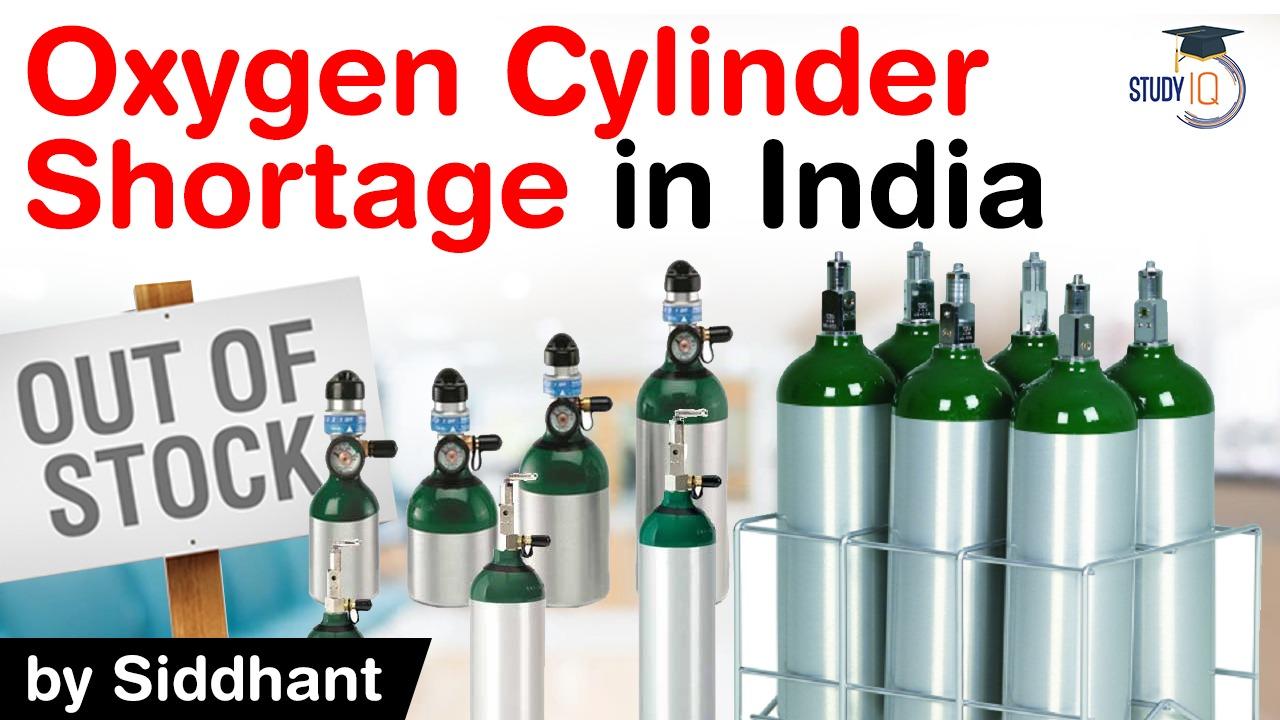Table of Contents
COVID 19
- As Covid-19 sweeps across the country, urban and rural areas alike face an unprecedented spike in oxygen use. Around 3-5 per cent (over 50,000) of active Covid-19 cases in India have lung tissues damaged enough by the virus to require external oxygen support.
- Since March, medical oxygen demand has grown from 750-800 to over 2,500 metric tonnes, and now, hospitals are struggling.
The supply
- In an ideal scenario, it takes 3-5 days for oxygen to journey from a manufacturer to a patient’s bed.
- But delay in transportation to dealers, conversion into cylinders and supply to hospitals can take longer if even a tiny link in the supply chain falters.
SUPPLY
- India’s big oxygen manufacturers, such as Inox Air Products, Linde India, Goyal MG Gases, National oxygen, use cryogenic distillation technique to compress air, feed it into distillation columns and get liquid oxygen. It has 99.5 per cent purity. This process, an official from Inox said, can take two-and-half-days.
- The liquid oxygen is filled into special cryogenic transport tankers that maintain -180 degree centigrade temperature to travel to smaller plants in hinterlands, where liquid oxygen is converted into gaseous form, fed into cylinders and transported to the final destination – hospitals.
SUPPLY
- India has the capacity to produce 6,900 metric ton of liquid oxygen daily, health secretary Rajesh Bhushan said in a media interaction. According to the All India Industrial Gases Manufacturers’ Association (AIIGMA), over 2,500 tonne is being directed towards hospitals, most consumed by coronavirus patients, and another 2,000-2,300 tonne is industrial requirement each day.
- So if India is not exhausting its capacity of 6,900 metric tonnes, why is oxygen suddenly a concern?
Logistics
- As demand surges, logistics are falling short. India has roughly 1,200-1,500 tankers for transport. Before the pandemic, the tankers were enough, but now they are difficult to hire and cost more.
- Inox is the biggest manufacturer of liquid oxygen in India, with capacity of 1,911 metric tonnes per day. It currently supplies 1,400 tonnes, and has 550 transport tanks and 600 drivers to supply to 800 hospitals across India. But this may soon fall short.
- It can take 5-6 days, for instance, for oxygen to travel from Inox Pune plant to Osmanabad, where a dearth of oxygen has emerged. The Centre is now working to utilise nitrogen tankers to transport oxygen. In just Maharashtra, 10 more tankers have been roped in.
The price rise
- Oxygen is generally quite cheap, but suddenly it has become expensive. A cylinder that would earlier cost Rs 100-150 now costs Rs 500-700 for refilling. With this, hoarding has begun. Fearful of not getting a Covid bed in hospital, people are keeping oxygen cylinders at home.
- Before the pandemic, it would cost Rs 1.5-2 to refill a cubic metre of oxygen. But the cost of logistics has risen, so now Delhi will find refilling costs Rs 10-15 per cubic metre, and Mumbai Rs 15 per cubic metre. The government has fixed the cost of refilling at Rs 17.49 per cubic metre.
The price rise
- Madhya Pradesh relied on Maharashtra and Gujarat for oxygen – as supplies from these states reduced, it has turned to Chhattisgarh for supply.
- In some states like Maharashtra, only 20 per cent oxygen produced can be directed for industrial purposes, rest are reserved for medical use.
What government is doing
- There is also the wastage of oxygen – mild cases who don’t need it are put on oxygen support, sometimes leakages are reported from oxygen pipelines. An expert committee under MoHFW has fixed oxygen supply to 40 litres in intensive care units and 15 litre per minute in normal ward per patient per minute.
- It has advised to monitor patients on oxygen support daily, and only put those with oxygen saturation levels below 94 on oxygen support. As per the committee, 20 out of 100 patients turn symptomatic and three of them critical. This is the pool that may require oxygen.
NUMBERS
- India’s per day oxygen production capacity: 6,900 metric tonne
- Current requirement: Over 2,500 metric tonne
- Oxygen Transport tankers: 1,200-1,500
- Active Covid cases: 9.75 lakh
- On oxygen: 5.8%
Latest Burning Issues | Free PDF

























 WhatsApp
WhatsApp